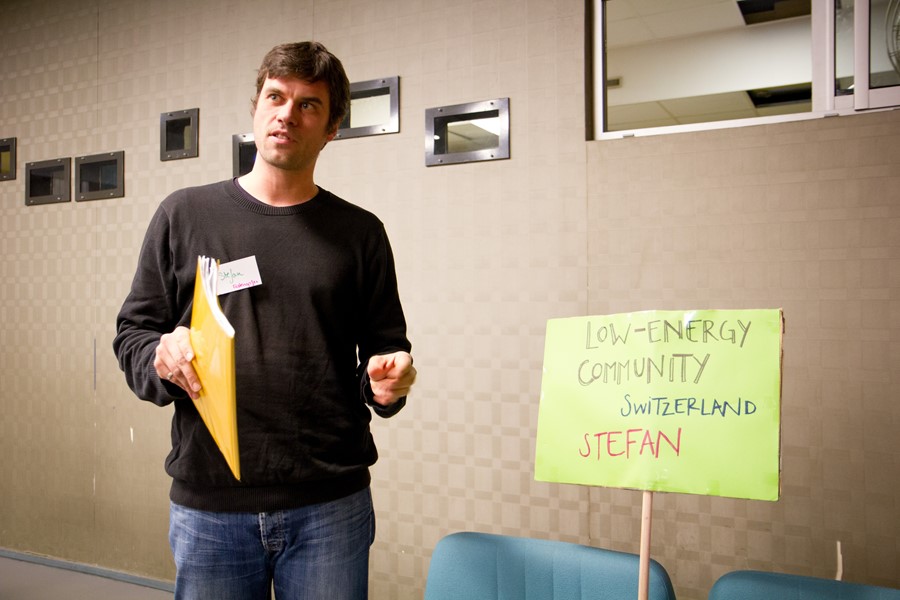
Stefan Salzmann is Desk officer for Sustainability at the Swiss Lenten Fund – Fastenopfer. He’s the father of a 1 year old son and is living in a low-carbon emission community in the city of Zurich (Switzerland) named “Kalkbreite”. In this interview, he shares with us his experience.
What is the “Kalkbreite” project and how are you engaged in it?
The community is organized as a cooperative. It is a house with 90 flats and 250 inhabitants. There are also businesses and services. There is a shop selling local food, two bars, a restaurant, a doctor and a branch of the Alternative Bank of Switzerland. Due to the cooperative structure, we have to pay a certain amount to cover our rent, which is much cheaper compared to market oriented rents in the city centre – it makes living sustainably attractive, also for ordinary people.
Why it is important, specific and different from the common production/consumption system? How is the “Kalkbreite” project transformative? Could this initiative improve the life of people?
The construction of the building was done with a very low energy input. As an example, recycled concrete was used as much as possible. The building is insulated with the highest available standards and the little amount of additional energy input comes from groundwater. Solar panels on the roof deliver electricity. While living in this building, we use a sustainable amount of energy – our personal lifestyles are of course not regulated, except for the fact that we are not allowed to own a car. However, there is car sharing cooperative around the corner.
What’s special about our cooperative is the fact, that we reduced the amount of private space to a minimum. This allows us to use less energy (for construction and heating). Instead there are many rooms which are open to all inhabitants through a reservation-system. There is a roof-kitchen, a sauna, a music-room, a timber workshop, a library and so on that are open and somehow shared. This means, that we do not have to live without a certain luxury to be sustainable, and this gives the opportunity to a broader population to live more sustainably. They are not necessarily idealistic, but are just interested in good living conditions. This makes the “Kalkbreite” solution very interesting to me.
What’s the feasibility of this alternative? How did it start? What challenges were faced?
It started a decade ago with some plans presented to the city of Zurich. The political will of the city of Zurich was very important for the project’s implementation overall. Without their political will, some profit maximizing corporation would have built on this area to generate high rents and profits.
How is the experience of sharing this initiative with others? How can these alternatives be repeated and amplified?
Repeating this idea is possible! Of course a lot of time is needed to construct a house for 250 inhabitants, but the idea, the concept and the lessons learnt are available online and are free for everyone: www.kalbreite.net [in German]
The cooperative “Kalkbreite” is already constructing a second house in the city centre of Zurich at Zollstrasse – with the same objective: to offer a sustainable way of living.
What is your conclusion?
Living sustainably means to reduce consumption and the ecological footprint. This could mean to consume less, but it does not necessarily mean “less” as the example of “Kalkbreite” shows. I never lived on such a small ecological footprint, with so high starndards of living, such as having the chance to enjoy a sauna. Such solutions are necessary and we should promote them!
Link to Kalkbreit Project in Switzerland: www.kalkbreite.net [in German]
